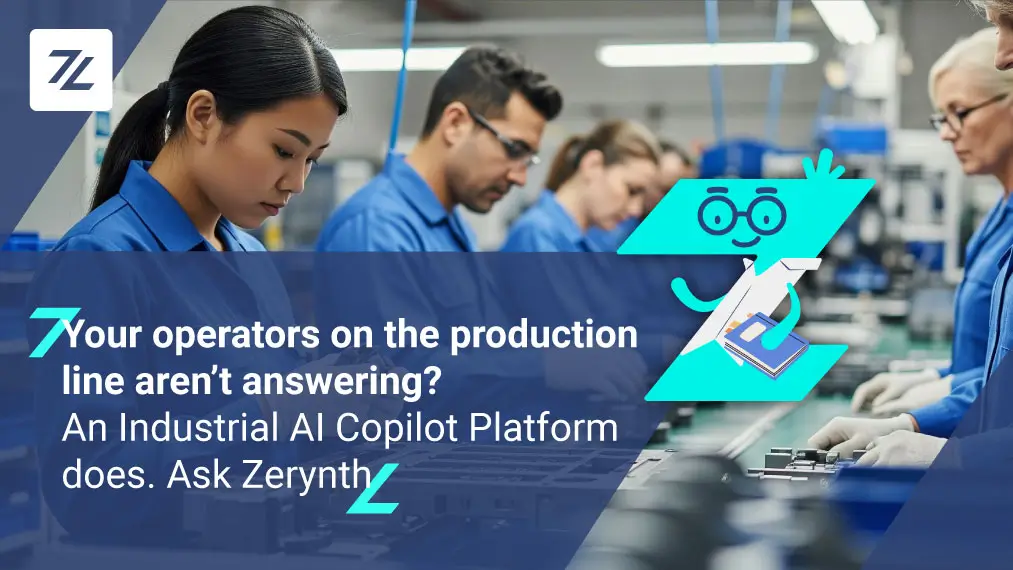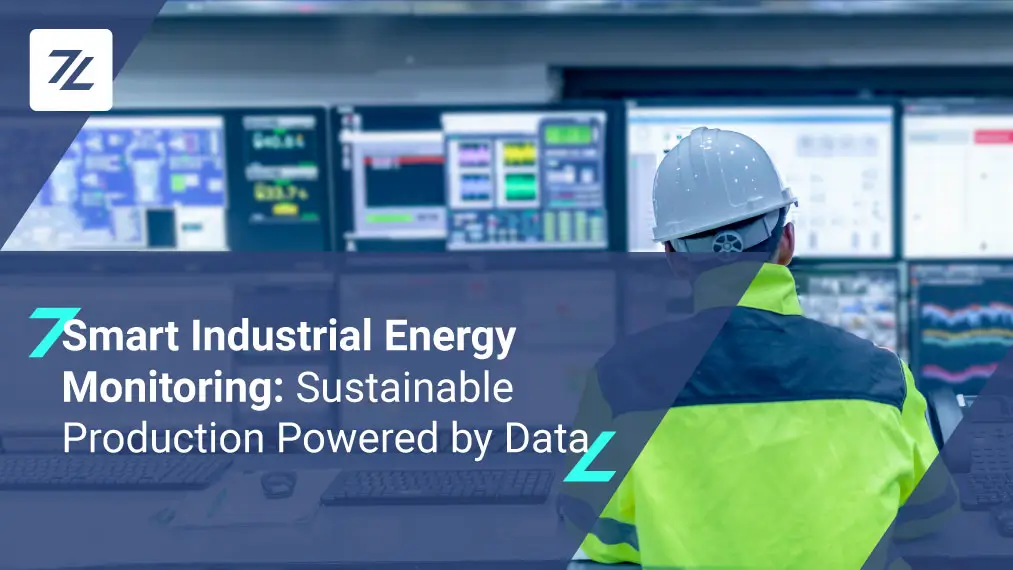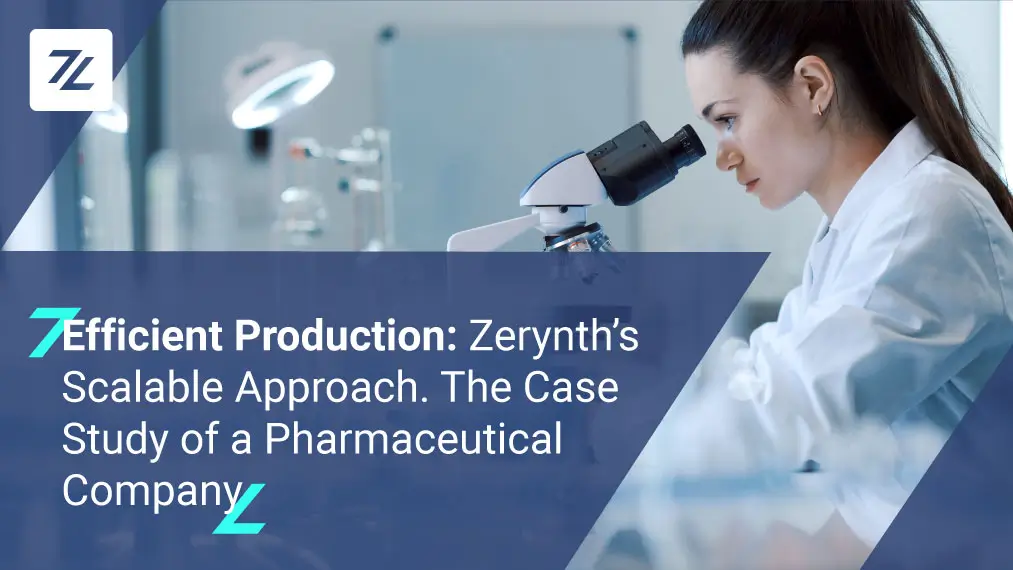Interview with Emanuele Figliolia, Product Manager at Zerynth. How does the Zerynth Industrial IoT & AI Platform help SMEs achieve energy efficiency in industrial production?
Emanuele Figliolia, Product Manager at Zerynth, explains the importance of monitoring industrial equipment and how, thanks to the Zerynth Platform, companies can now improve the efficiency of their production processes, focusing on sustainability and energy savings.
Hi Emanuele, thank you for joining us today. Let’s start from the beginning: why is it so important to monitor industrial equipment and production processes in today’s context?
Thanks for having me! Monitoring industrial equipment has become crucial for several reasons. First and foremost, companies are under increasing pressure to improve energy efficiency and reduce operating costs. Today, it’s not enough to just run machines and processes; it’s essential to fully understand how they operate, optimize resource usage, and monitor for any real-time waste or anomalies. This is particularly relevant as sustainability and operational efficiency have become strategic priorities for businesses.
Additionally, regulations like the GDPR and directives from the European Union are pushing companies to focus more on controlling their production processes, requiring solutions that ensure both security and compliance. Those who aren’t prepared yet will need to get up to speed soon to stay competitive.
Equally important is the growing consumer demand for sustainable products. The demand for goods produced with environmental respect is pushing companies to improve not just their products but also the entire production cycle, demonstrating transparency and attention to environmental impact from the earliest stages of the industrial process.
How does the Zerynth Platform fit into this scenario? What are the key benefits for companies that use it?
The Zerynth Platform is a vital solution for companies seeking a practical and accessible way to enhance their productivity in today’s world. Our platform allows real-time monitoring of each machine’s status, identifying whether it’s running, idle, or in an alarm state, and sends immediate notifications in case of anomalies.
But today, simply talking about monitoring would be limiting. The platform is designed to support strategic decision-making and optimize the entire production process. Thanks to the analysis of large amounts of data, it provides clear and immediate suggestions to identify areas for improvement, optimize company performance, monitor CO2 emissions, and generate detailed reports on energy costs. It’s truly a game changer for energy efficiency and operational sustainability.
What is the ideal target for your solution?
Our primary target is SMEs operating in various industrial sectors, such as plastics, metals, mechanical engineering, food production, and many other manufacturing industries.
We cater to companies managing a heterogeneous mix of machines, often composed of both modern and legacy equipment, who need a fast and flexible solution to gain real-time visibility on their shop floor. Our platform provides crucial decision-making support to help them take concrete steps toward improvement.
What are the main challenges these companies face that your solution helps to solve?
One of the biggest challenges in managing the shop floor is the lack of complete visibility over the machines, especially when dealing with plants that combine equipment from different suppliers and technologies that aren’t always compatible with each other. This creates fragmentation, making it difficult to get a holistic view of operations. Often, companies rely on customized, isolated tools that don’t communicate with each other, which further complicates monitoring and management.
Another common challenge is maintenance management. Many companies still rely on manual, inefficient, and reactive processes. Our solution automates data collection from machines, making maintenance more proactive and predictive. It also facilitates integration with existing ERP and MES systems, ensuring smoother, more centralized operational management and greater efficiency.
In terms of features, what makes the Zerynth Platform so innovative?
The key features of our app include real-time monitoring of machine status and energy consumption, maintenance management, and detailed reporting. One feature that our customers really appreciate is proactive maintenance, which allows them to manage breakdowns and downtime by anticipating issues through real-time monitoring, reducing unplanned outages.
Additionally, our app is highly flexible and easily integrates with other existing software solutions, such as ERP or MES, offering centralized data management and improving operational efficiency.
I imagine collecting precise and actionable data is essential. What kind of data is gathered from the machines?
Absolutely, data is at the core of everything. We collect detailed information about machine status, such as whether they are running, idle, or in an alarm state, and we measure instantaneous power. These data points are then visualized through intuitive dashboards that allow companies to identify any issues in real-time and take prompt action. We also monitor CO2 equivalent emissions, providing a key indicator to evaluate the plant’s sustainability. This way, our clients can not only optimize their machine performance but also improve the overall sustainability of their facilities.
Finally, what direction is Zerynth taking for the future?
Zerynth is expanding its IoT solutions internationally, with an increasing focus on sustainability and energy efficiency. We’re working to make our platform even more integrated with existing enterprise systems, enabling businesses to automate not just machine monitoring but their entire production process.
Our goal is to create increasingly digitized and sustainable industrial plants, capable of meeting future challenges. We want to offer a proactive platform that doesn’t just provide parametric analysis but communicates with the operator in an intuitive language, suggesting targeted decisions for continuous improvement. In this way, we’re getting closer to the human element, supporting them in the decision-making process to optimize both efficiency and sustainability.
Share This Story, Choose Your Platform!
Follow Zerynth on
Latest Posts





